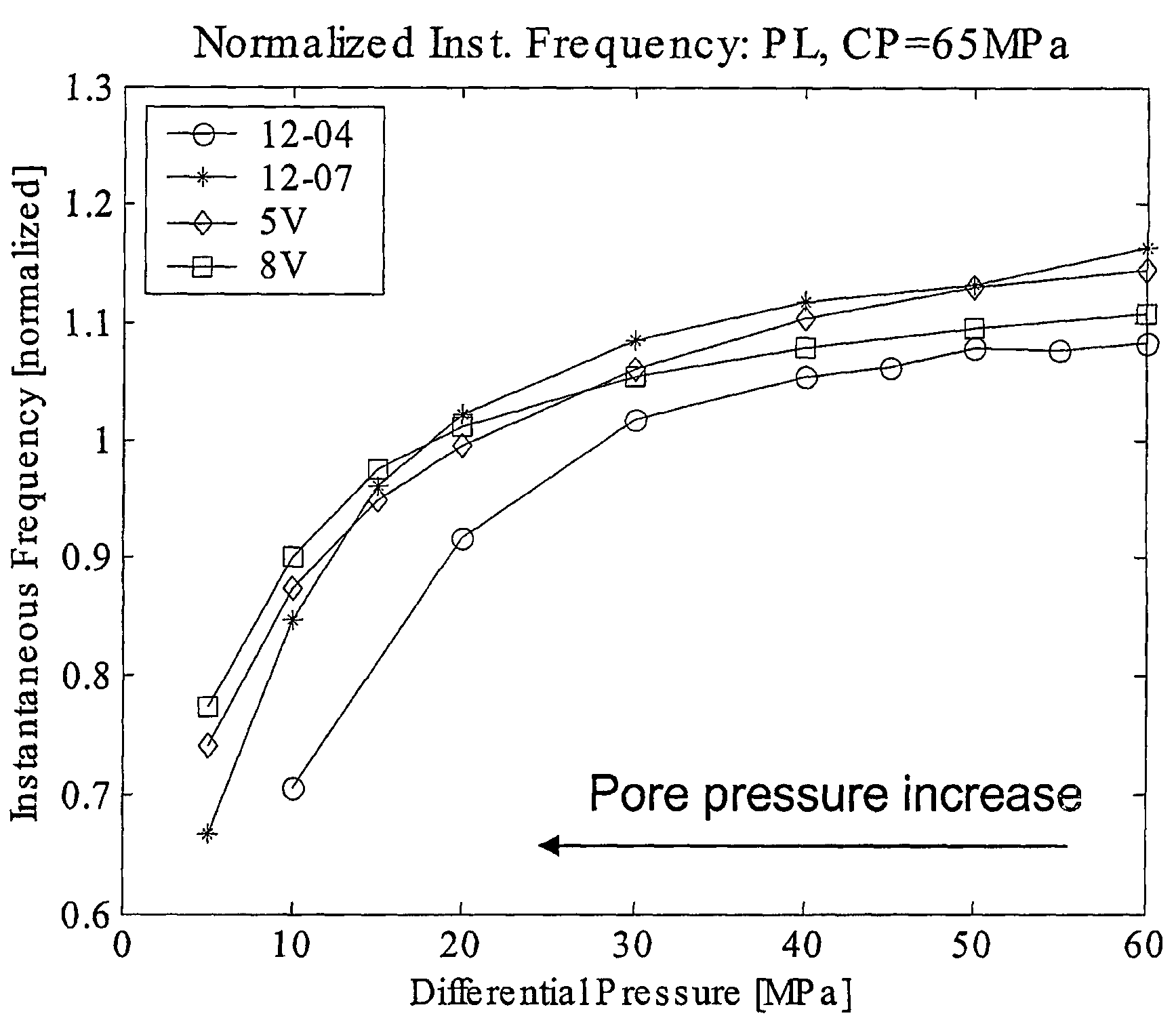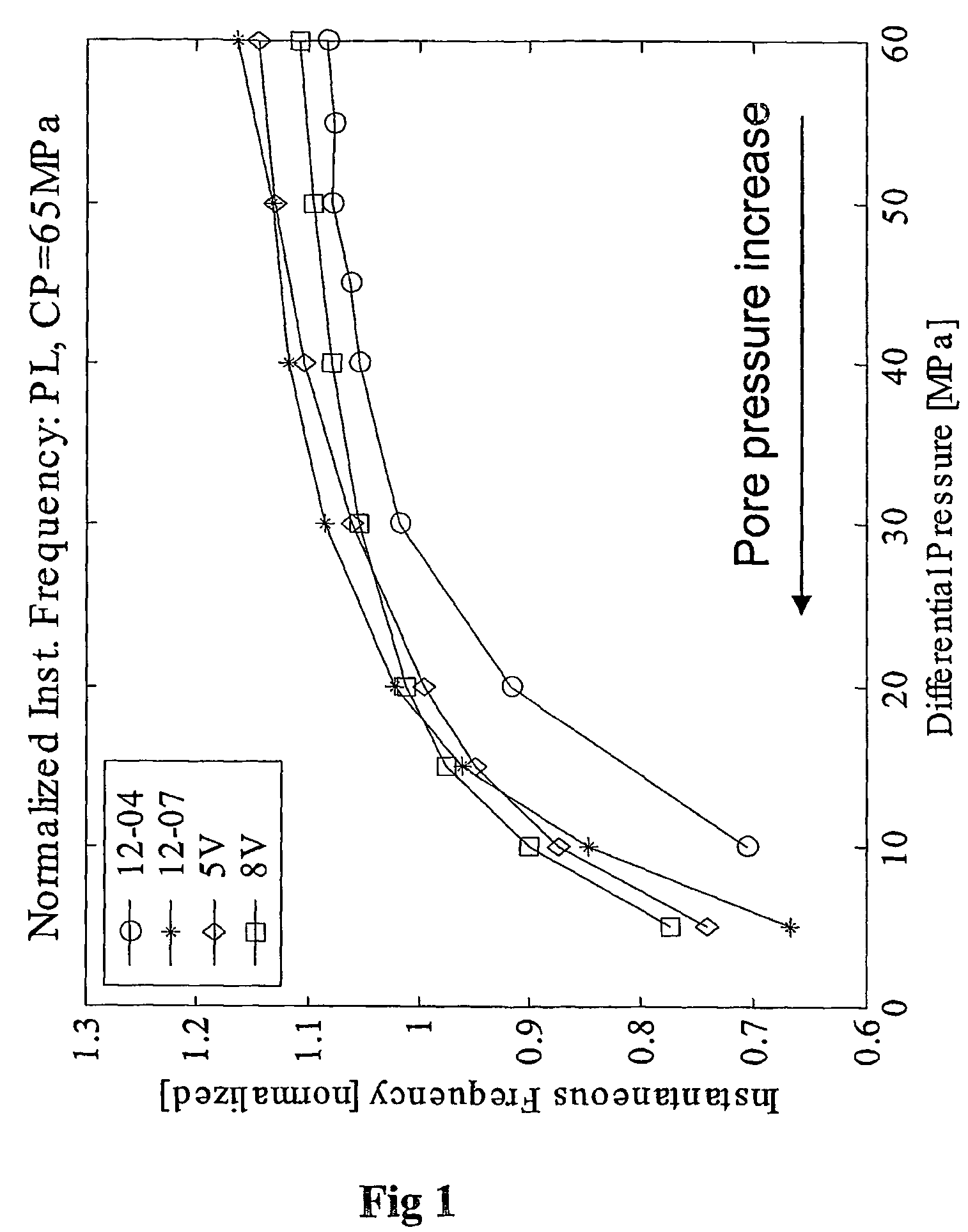Method for predicting pore pressure
a pore pressure and pore technology, applied in seismology for waterlogging, instruments, reradiation, etc., can solve the problems of uncertainty in predicting overpressure, loss of drilling tools in the borehole, extended effects of overpressure, etc., and achieve the effect of bandwidth
- Summary
- Abstract
- Description
- Claims
- Application Information
AI Technical Summary
Benefits of technology
Problems solved by technology
Method used
Image
Examples
Embodiment Construction
[0052]Embodiments of the present invention are based on a discovery that there appears to exist relationships between some seismic attributes, and in particular frequency related attributes and pore pressure of Earth formations. These attributes comprise but are not limited to the following: instantaneous frequency; weighted mean frequency; instantaneous pseudo-quality factor; instantaneous dominant frequency; instantaneous bandwidth; instantaneous phase; effective bandwidth; peak frequency; envelope; and energy half time. The discovery of the existence of relationships between the particular seismic attributes and the pore pressure was made as a result of performing laboratory experiments on samples of various Earth formations under precisely controlled fluid pressure and confinement pressure conditions. A possible advantage of using laboratory determination of the relationship between pore pressure and seismic attributes is substantial reduction in uncertainty as to which seismic ...
PUM
 Login to View More
Login to View More Abstract
Description
Claims
Application Information
 Login to View More
Login to View More - R&D
- Intellectual Property
- Life Sciences
- Materials
- Tech Scout
- Unparalleled Data Quality
- Higher Quality Content
- 60% Fewer Hallucinations
Browse by: Latest US Patents, China's latest patents, Technical Efficacy Thesaurus, Application Domain, Technology Topic, Popular Technical Reports.
© 2025 PatSnap. All rights reserved.Legal|Privacy policy|Modern Slavery Act Transparency Statement|Sitemap|About US| Contact US: help@patsnap.com



